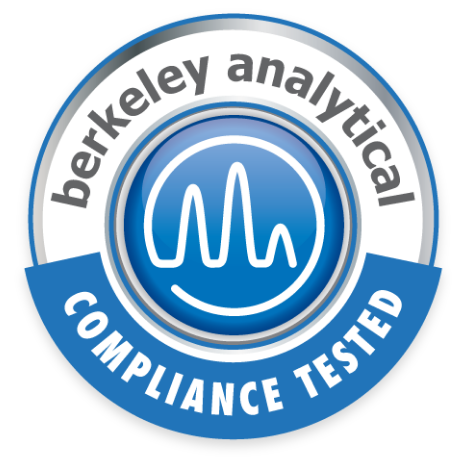Testing of Paint & Coatings for VOC Emissions & VOC Content
 Berkeley Analytical can help paint & coatings manufacturers meet the requirements of U.S. Green Building Council's (USGBC) LEED v4/4.1 EQ Credit: Low-Emitting Materials. BkA offers paint testing services for VOC emissions and VOC content to support this credit. The Materials and Resources (MR) credit requires disclosure of chemical ingredients and avoidance of chemicals of concern as ingredients. BkA works with manufacturers to help deliver this Building Product Disclosure and Optimization – Material Ingredients information to the architectural community in a meaningful manner while protecting proprietary product information.
Berkeley Analytical can help paint & coatings manufacturers meet the requirements of U.S. Green Building Council's (USGBC) LEED v4/4.1 EQ Credit: Low-Emitting Materials. BkA offers paint testing services for VOC emissions and VOC content to support this credit. The Materials and Resources (MR) credit requires disclosure of chemical ingredients and avoidance of chemicals of concern as ingredients. BkA works with manufacturers to help deliver this Building Product Disclosure and Optimization – Material Ingredients information to the architectural community in a meaningful manner while protecting proprietary product information.
VOC Emissions
If a building project under LEED v4/4.1 wants to earn points using the LEM credit, they will seek interior finishes of all types that are tested for VOC emission by CDPH Standard Method V1.2. The building interior is divided into eight categories paints & coatings, adhesives & sealants, floors, wall panels, ceilings, insulation, composite woods, and furniture (if included in the rating system). The building project can earn up to 3 LEED credits for showing compliance for these product categories. Additionally, all layers of a system must be compliant. Thus, both primers and topcoats require environmental chamber testing. BkA provides testing of VOC emissions for all types of building products including paints and coatings. The test results can be used to establish both certified and self-declared product claims. See our discussion on Putting Your Test Results to Work for information about making valid self-declared environmental claims based on your paint testing results. BkA’s ClearChem™ program provides a practical solution. ClearChem is a fully transparent program in which companies self-declare compliance of their products against the criteria in CDPH Standard Method V1.2. ClearChem is listed by USGBC as an accepted first party claim for LEED v4/4.1 EQ Credit: Low-Emitting Materials.
VOC Content
 Paints and coatings also must meet VOC content restrictions in order to qualify for the LEED v4/4.1 LEM credit. The guidelines for VOC content are the California Air Resources Board Suggested Control Measure (SCM) of 2007 or the South Coast Air Quality Management District (SCAQMD) Rule 1113 of 2016. Berkeley Analytical offers content VOC testing of water-based paints and coatings using ASTM D6886, "Standard Test Method for Speciation of the Volatile Organic Compounds (VOCs) in Low VOC Content Waterborne Air-Dry Coatings by Gas Chromatography." Traditionally, U.S. EPA Method 24 has been used for the measurement of VOC content. This paint testing method is a gravimetric method that relies on Karl Fischer titration to determine the water content component of a product. Because of the uncertainties in the analysis, VOC contents much below 50 grams per liter (50 g/L) cannot be measured reliably with Method 24. ASTM D6886 uses gas chromatography to directly measure the content of individual compounds so it has much lower detection limits and is more appropriate for VOC testing of the new generation of low VOC and zero VOC interior paints and finishes. Due to these clear advantages, ASTM D6886 is recognized as a compliance pathway for analysis of paints in LEED v4.
Paints and coatings also must meet VOC content restrictions in order to qualify for the LEED v4/4.1 LEM credit. The guidelines for VOC content are the California Air Resources Board Suggested Control Measure (SCM) of 2007 or the South Coast Air Quality Management District (SCAQMD) Rule 1113 of 2016. Berkeley Analytical offers content VOC testing of water-based paints and coatings using ASTM D6886, "Standard Test Method for Speciation of the Volatile Organic Compounds (VOCs) in Low VOC Content Waterborne Air-Dry Coatings by Gas Chromatography." Traditionally, U.S. EPA Method 24 has been used for the measurement of VOC content. This paint testing method is a gravimetric method that relies on Karl Fischer titration to determine the water content component of a product. Because of the uncertainties in the analysis, VOC contents much below 50 grams per liter (50 g/L) cannot be measured reliably with Method 24. ASTM D6886 uses gas chromatography to directly measure the content of individual compounds so it has much lower detection limits and is more appropriate for VOC testing of the new generation of low VOC and zero VOC interior paints and finishes. Due to these clear advantages, ASTM D6886 is recognized as a compliance pathway for analysis of paints in LEED v4.
Building Product Disclosure and Optimization – Material Ingredients
The Materials and Resources (MR) credit in LEED v4 has two options, one promoting Material Ingredient Reporting, and the other for Material Ingredient Optimization. A feature of Material Ingredient Reporting is that manufacturers can report the contents of their product using a combination of direct reporting by chemical name and CASRN and reporting by ingredient hazard properties. This creates the possibility for manufacturers to protect proprietary formulation information. Both the Material Ingredient Reporting and Material Ingredient Optimization have a number of different pathways for demonstrating compliance. Ask BkA about the ingredient reporting and chemical hazard scoring and rating processes that are needed for both of these credit options.


